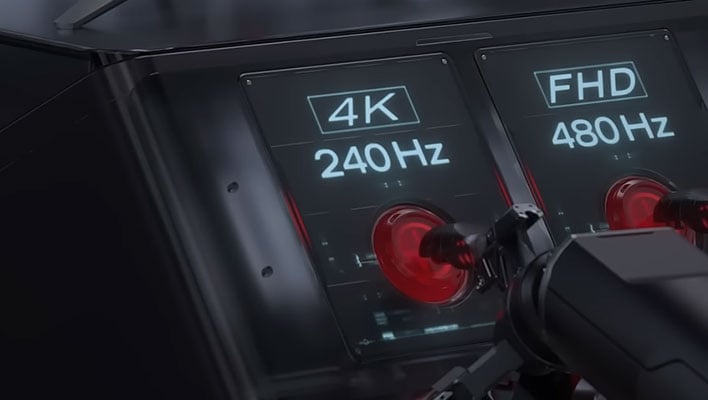VESA Updates Adaptive-Sync Spec To Prepare For Onslaught Of Dual Refresh Rate Monitors

At least two notable hardware companies—ASUS and LG—are planning to release gaming monitors with dual refresh rate options, and in preparation for what will likely be more to come, the Video Electronics Standards Association (VESA) has published an update to it Adaptive Sync Compliance Test Specification (Adaptive Sync CTS). What does this mean?
Let's start with the monitor announcements. In the lead-up to this year's Consumer Electronics Show (CES), both ASUS and LG have introduced gaming displays that let enable users to toggle between a native 4K resolution with a fast 240Hz refresh rate, and and a lower 1080p resolution at a blistering 480Hz..
The upshot is that buyers don't necessarily have to decide between a higher a resolution display with a slower refresh rate, or a lower resolution panel with a faster refresh rate. Several upcoming monitor models offer both in a single package, which is mostly unique in the gaming monitor space.
Yes, there are plenty of monitors on the market that let you choose between refresh rates within Windows. However, with just a few exceptions, the maximum refresh rate has typically been tied to the native resolution. There are some televisions that allow for faster refresh rates at lower resolutions, and last February we reviewed a Razer Blade 16 laptop with dual refresh rates (UHD+ at 120Hz and FDH+ at 240Hz). But outside of the CRT era, faster refresh rates at lower resolutions have generally not been an option.
They soon will be, though, and VESA is getting ahead of things with its Adaptive Sync 1.1a update, which provides additional testing procedures and a new logo "for an emerging category of display that can operate at different maximum refresh rates when resolution is reduced."
The logo will make it easier for buyers to discern which monitors offer a dual refresh rate mode. VESA provides the example of a display offering a 4K resolution at 144Hz and 1080p at 280Hz, though we'll inevitably see multiple combinations as monitor makers jump on board (assuming dual mode displays prove popular).
"Until recently, most displays did not have the ability to operate at different refresh rates when the resolution is reduced, instead running at the refresh rate supported by their physical maximum resolution. Users interested in both high-performance gaming as well content creation, photography, or video editing, have often been faced with a difficult choice between purchasing a display with low latency and high refresh rates, or one with higher resolution," explains Roland Wooster, chairman of the VESA Display Performance Metrics Task Group.
"Today, more and more displays are coming to market that give users the best of both worlds. VESA’s updated Adaptive Sync Display CTS includes optional testing for these innovative displays, and a new dual mode logo allowing consumers to identify the range of variable refresh rate performance of these displays more easily," Wooster adds.
Additionally, VESA's updated specification takes into account 'overclocked' refresh rates that are not enabled by default. This is something that monitor makers have offered for several years now, on select models.
"In such cases, the overclocked mode must support Adaptive Sync-enabled GPUs in a non-proprietary manner, and the display must pass all of the rigorous Adaptive Sync Display compliance tests in both its factory default mode, and completely retested a second time in the overclocking mode," VESA explains.
VESA also notes that aside from the optional new bits, none of the testing criteria has changed with the Adaptive Sync Display 1.1a update. By extension, this means existing monitors that are certified with the previous 1.1 specs will stay certified. Also, ASUS and LG have both issued statements supporting the updated spec, with each one's upcoming monitors with dual modes expected to bear the new badge.


